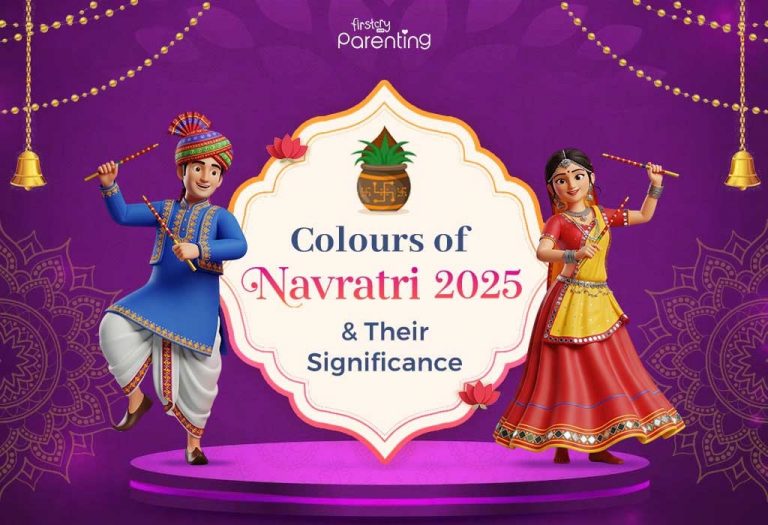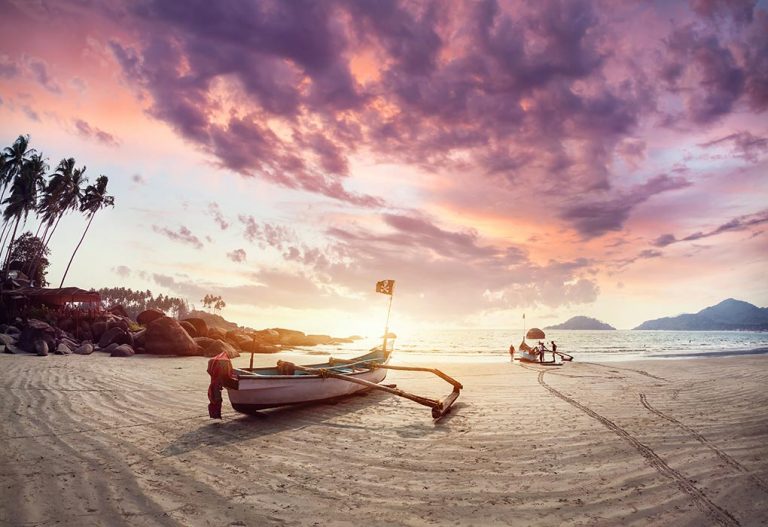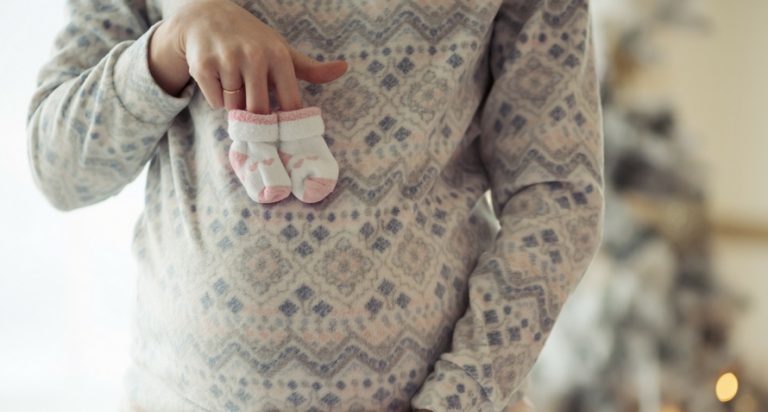Navratri 2025: Navrati Colours and Their Importance
Navratri, the nine-day festival celebrating the victory of good over evil, has started! However, 2025 is blessed with ten days, this Navratri. In the ten days from 22nd September 2025 to 1st October 2025, dress up in the vibrant colours depicting the true spirit of the Goddess. Also, get your husband and the kids on board and enjoy a colourful festive season with our complete Navratri dress colours guide!
When the festive season arrives, we ponder the colours to wear in Navratri. How are Navratri colours decided? Why do they change each year? The colours are chosen according to the Drik Panchang, based on the day of the week when the festival begins. Each day’s colour is dedicated to a particular form of Goddess Durga.
From 22nd September to 1st October, why not dress up in the Shardiya Navratri festival’s nine colours and celebrate the many virtues of the Goddess? In a way, these colours also stand for women in general. After all, from protecting our children from harm to keeping the family happy to staying brave in all circumstances, women are true warriors!
History and Significance of Navratri
Navratri’s nine colours represent the vibrant and diverse facets of this beloved Hindu festival. Each hue holds a unique significance, collectively creating a visual spectacle that captivates hearts. Beyond its striking visual appeal, Navratri carries profound spiritual meaning, symbolising the eternal battle between good and evil, culminating in the triumph of righteousness. This cultural and spiritual Navratri significance unites communities, fostering a sense of togetherness and shared faith as they celebrate these auspicious nine nights. Delving into the history of Navratri unveils its time-honoured traditions and customs, offering insights into its enduring importance in Hindu culture. Navratri is not merely a festival; it is a sacred time for invoking blessings and embracing a virtuous path, underlining the deep-rooted importance of Navratri in the hearts of millions.
Navratri Colours List for 2025
Here’s the Navratri colours list 2025 and the meaning behind each shade. Dress up for the festivities with our guide on “Navratri Colours 2025.”
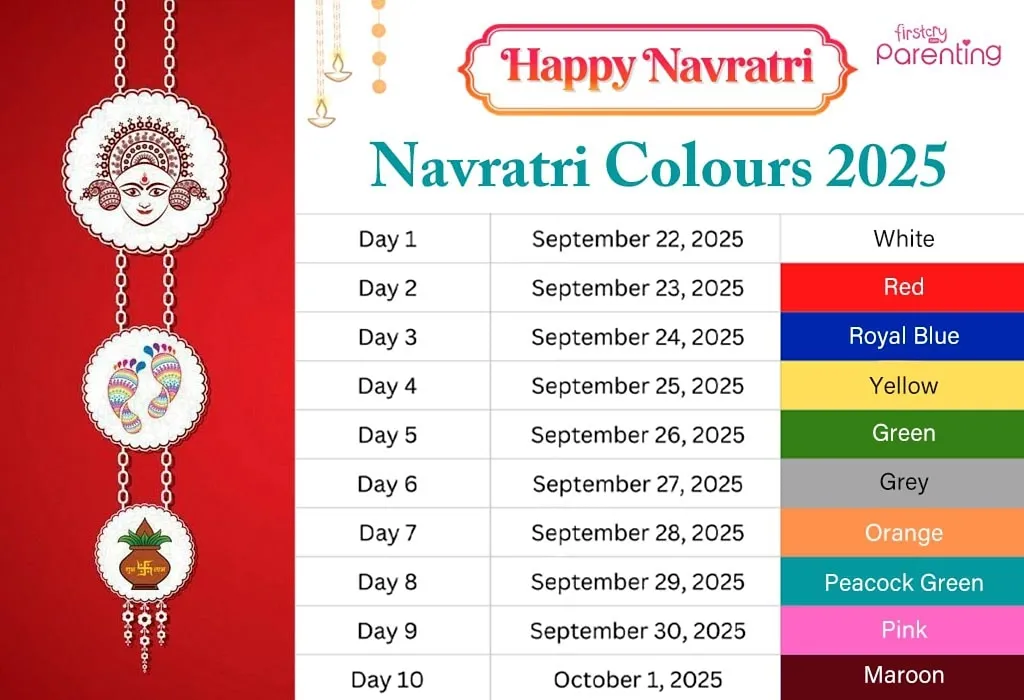
Day 1: 22 September – White
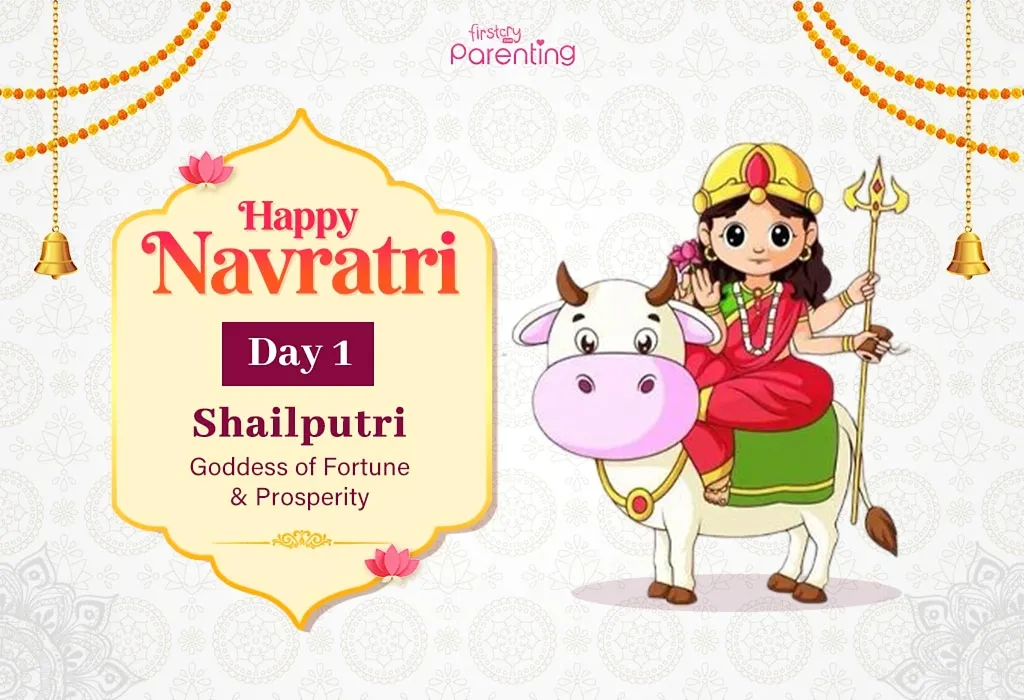
The festivities of Navratri begin with the worship of Mata Shailputri, one of the nine avatars of Maa Durga. She is the first form of Goddess Durga, the daughter of the mountains. With great fervour and enthusiasm, devotees install an earthen pot, called Ghatsthapana, on this day and offer a myriad of offerings to Goddess Durga for the welfare of the world.
The day’s colour is white, depicting peace, loyalty, and wisdom. On this day, the Maa Shailputri idol will be donned with a white colour saree and white flowers. Let’s wear white today and pray to Mata Shailputri for her immense blessings!
Day 2: 23 September – Red
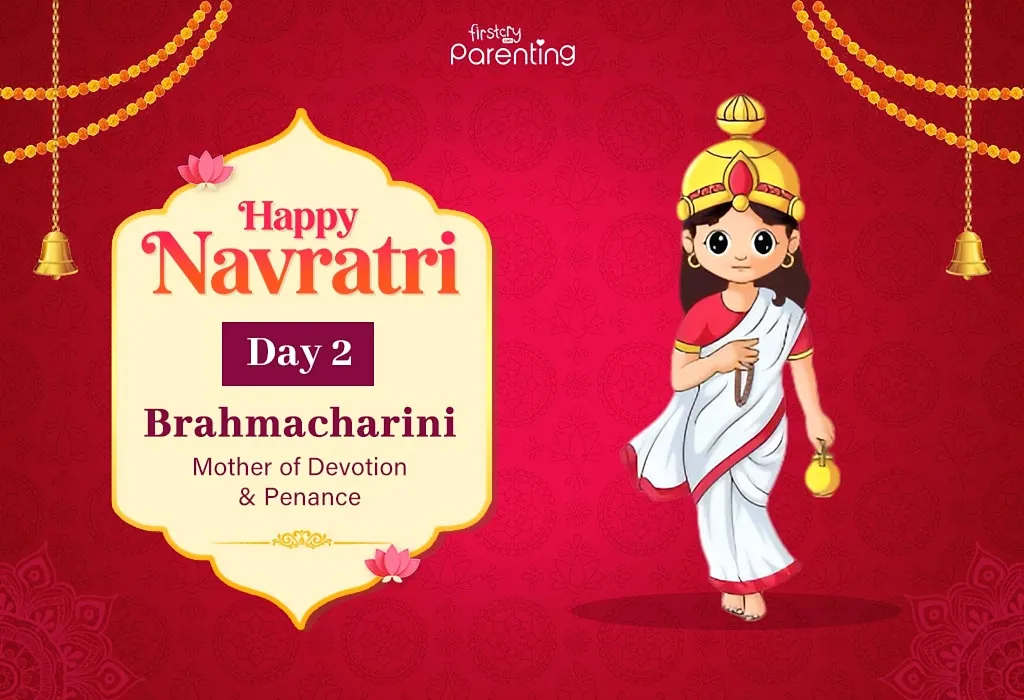
The second day of Navratri is celebrated with the same enthusiasm and full spirit. On this day, Maa Brahmacharini is worshipped as the unmarried form of Maa Vaishno. With a rosary in her right hand and a kamandala in the left, Mata Brahmacharini is the epitome of love.
Wear the colour red on this day to express your passion and love. Red is the most preferred colour for Mata’s chunni. Become calm and radiant like Maa Brahmachrini by wearing a bold and beautiful red this day!
Day 3: 24 September – Royal Blue
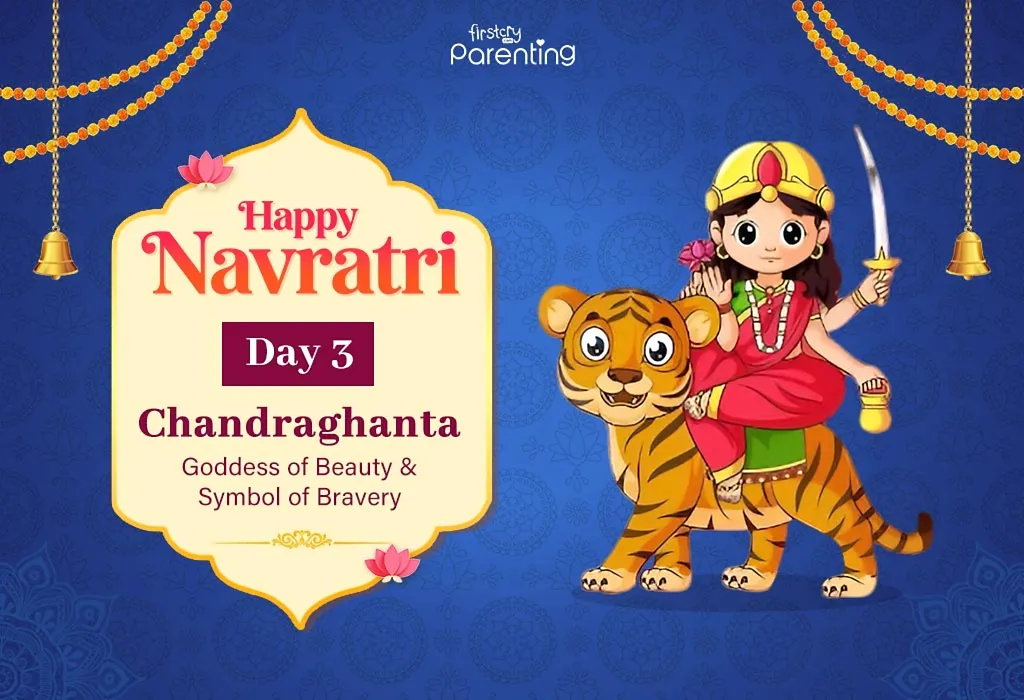
The third day of Navaratri continues with full vigour and enthusiasm. Mata Chandraghanta, who is worshipped on this day, fights against the evil forces in the universe. She adorns a beautiful half Chandra (moon) on her forehead and has eight hands that carry a rosary, pot, chakra, arrow, bow, lotus flower, kamandala, and mace.
Tritiya’s colour is royal blue and yellow, symbolising happiness and positivity. Let’s all wear royal blue and yellow today and fill our hearts and each other’s hearts with a warm glow like yellow!
Day 4: 25 September – Yellow
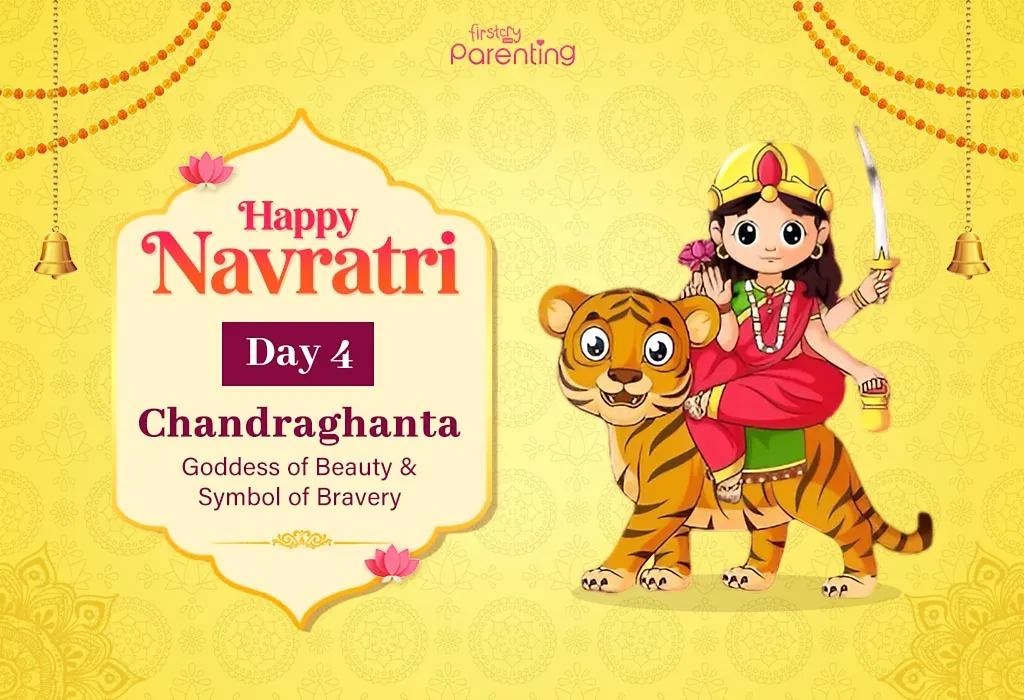
This day is dedicated to Maa Chandraghanta, the third form of Goddess Durga. She is depicted with a half-moon (chandra) shaped like a bell (ghanta) on her forehead, symbolizing calmness, courage, and grace. Devotees wear yellow attire on this day to invoke blessings of harmony and prosperity.
Day 5: 26 September – Green
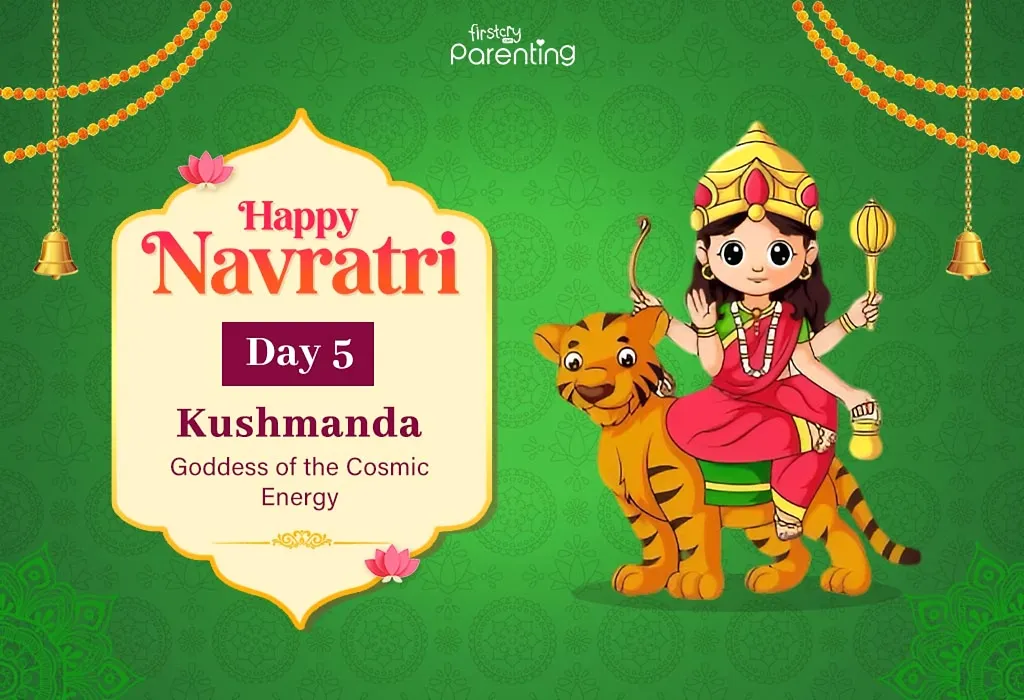
On the Panchami of Navratri, Mata Kushmanda is worshipped. According to mythology, she is believed to be the creator of the entire universe—and all through laughter! She blesses her children with glory, fame, and confidence.
This day, dress up in green – the colour of fertility, peace, and new beginnings of life, which the Goddess always extends to worshippers. Traditional dresses in green add a subtle style statement that will look just wow on your kids and get them in the festive spirit!
Day 6: 27 September – Grey
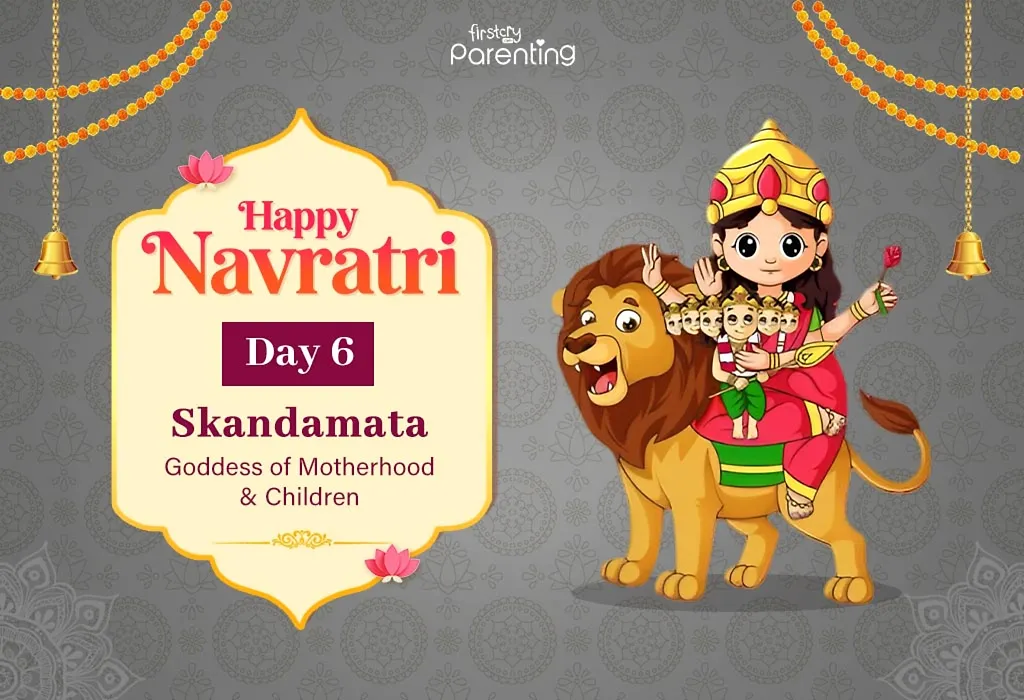
The Sasthi of Navratri is dedicated to Goddess Skandamata. She is the symbol of elegance and richness. With little Karthik, her son, in her arms, Mata Skandamata exuberates strength and elegance, yet the vulnerability of a mother. She can become a mighty storm cloud to protect her children if need be.
Sasthi of Sharad Navratri is made colourful by wearing grey clothes. Grey symbolises balanced emotions and a down-to-earth approach toward living. Make a subtle style statement by opting for fancy clothing or donning grey accessories like oxidised jewellery.
Day 7: 28 September – Orange
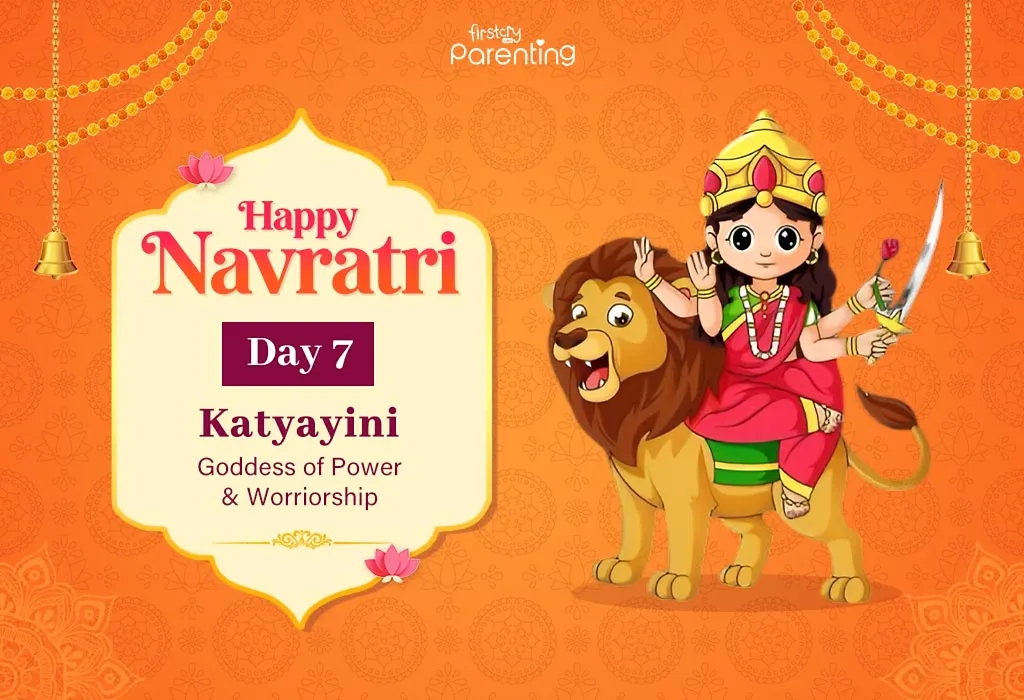
This is the day Durga Puja kicks off enthusiastically in West Bengal and other parts of India. Shashti is the start of four days of festivities for Bengalis worldwide. Mata Katyayani, an avatar of Ma Durga, is worshipped today. The story goes on to say that Maa Durga took the avatar of Mata Katyayani to destroy the tyrannical demon Mahishasura.
This day’s colour is orange, which totally justifies the upbeat and exuberant energy devotees feel in their souls. Orange represents action, liveliness, and enthusiasm. Nothing lights up hearts like a bright shade of orange! Become fearless like Maa Katyayani by wearing a bold and beautiful orange this day!
Day 8: 29 September – Peacock Green
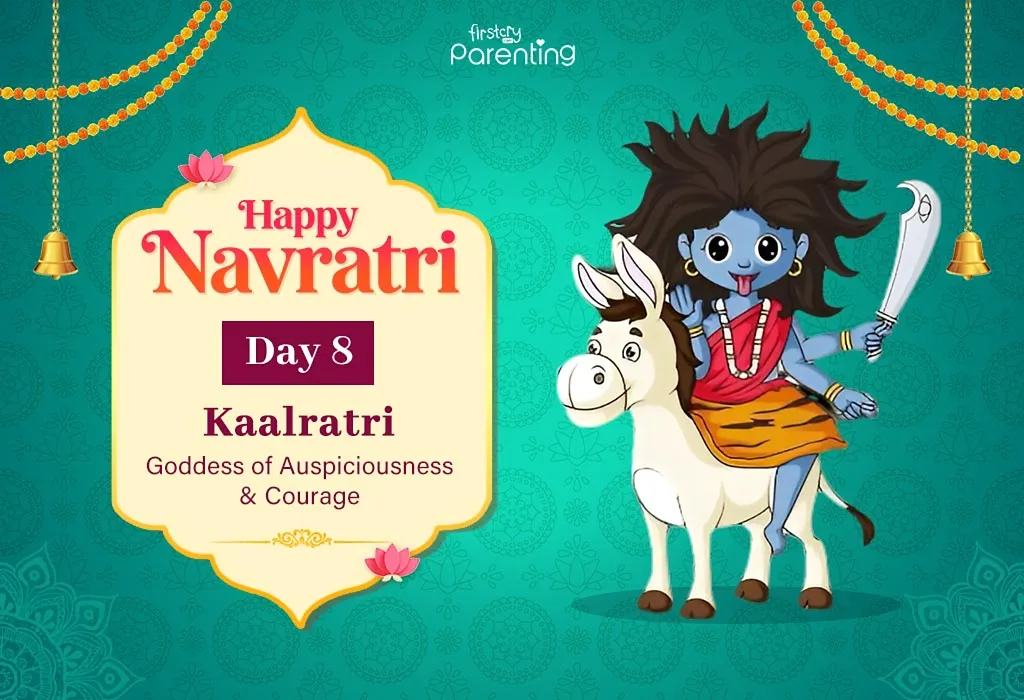
Devotees worship Mata Kaalratri on the eighth day of Navaratri. She is the most ferocious of all Durga avatars and protects against all sorts of trouble. Mata Kaalratri sacrificed her golden skin to slay demons. She is the destroyer of bad omens, spirits, and energies.
Ashtami of Sharad Navratri is made colourful by wearing peacock green clothes, symbolising health and prosperity, which Maa Kaalratri always offers. This colour is also related to distinctiveness and individuality.
Day 9: 30 September – Pink
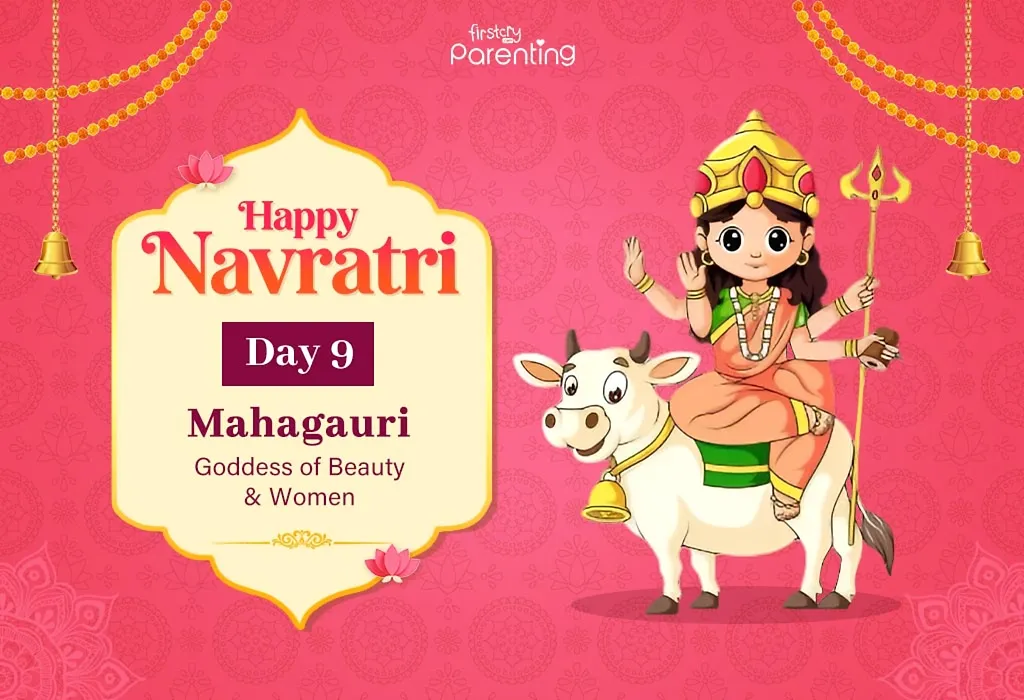
On Ashtami, Goddess Mahagauri is worshipped as the symbol of forgiveness and mercy. It is said that Mata Mahagauri destroys all the sins of time. The eighth day is also the day of Kanjak, where devotees welcome little girls into their homes as the avatars of Maa Durga and offer them delicious treats. It is a happening day, and people celebrate the eight-day with great love and devotion towards Maa Ambey.
Pink is the colour of the day, representing universal love, compassion, and kindness. It is worn in honour of Goddess Mahagauri, who signifies beauty, grace, and purity.
Day 10: 1 October – Marron
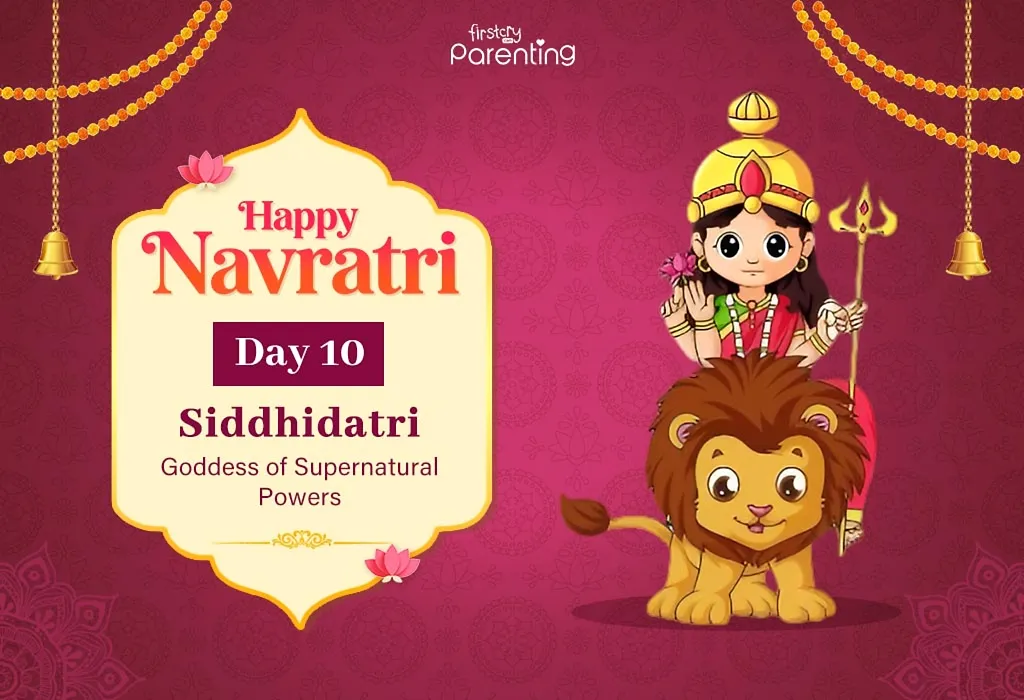
On the last day of Navratri, Mata Siddhidhatri is worshipped. Hindus worship Goddess Siddhidhatri to receive Siddhi (wisdom) and Nidhi (wealth). Maha Navami Puja and Kanya Puja are performed on this day. Hence, maroon is the colour of the day, denoting ambition and power.
Colours evoke happy emotions in devotees. During Navratri, everyone comes forward to welcome Maa Durga into their homes and celebrate this auspicious occasion with one another. To elevate the spirit and enthusiasm of people, wear traditional and modern clothes in different colours that are designated to the days of Navratri. Wearing clothes of the same colour brings people together and lights up hearts with joy and divinity. Let us celebrate these ten auspicious days with purity and devotion and bless each other with positive hearts.
Disclaimer: The information for the article is sourced from the Hindu Panchang. We do not claim that the details provided in this article are entirely truthful and precise. Prior to adopting them, be sure to consult with a professional in the relevant field.
🪘🥁🪔🛕Happy Navratri 2025!🪘🥁🪔🛕
Also Read:
Goddess Durga Names
Goddess Kali Names for Baby Girls
Goddess Parvati Names for Baby Girl
Goddess Saraswati Names for Baby Girl
Navratri and Dussehra Facts for Kids
Tips to Dress Up Your Kids for Navratri Festival
Delicious Navratri Fasting Food Recipes You Must Try This Festive Season
Was This Article Helpful?
Parenting is a huge responsibility, for you as a caregiver, but also for us as a parenting content platform. We understand that and take our responsibility of creating credible content seriously. FirstCry Parenting articles are written and published only after extensive research using factually sound references to deliver quality content that is accurate, validated by experts, and completely reliable. To understand how we go about creating content that is credible, read our editorial policy here.





